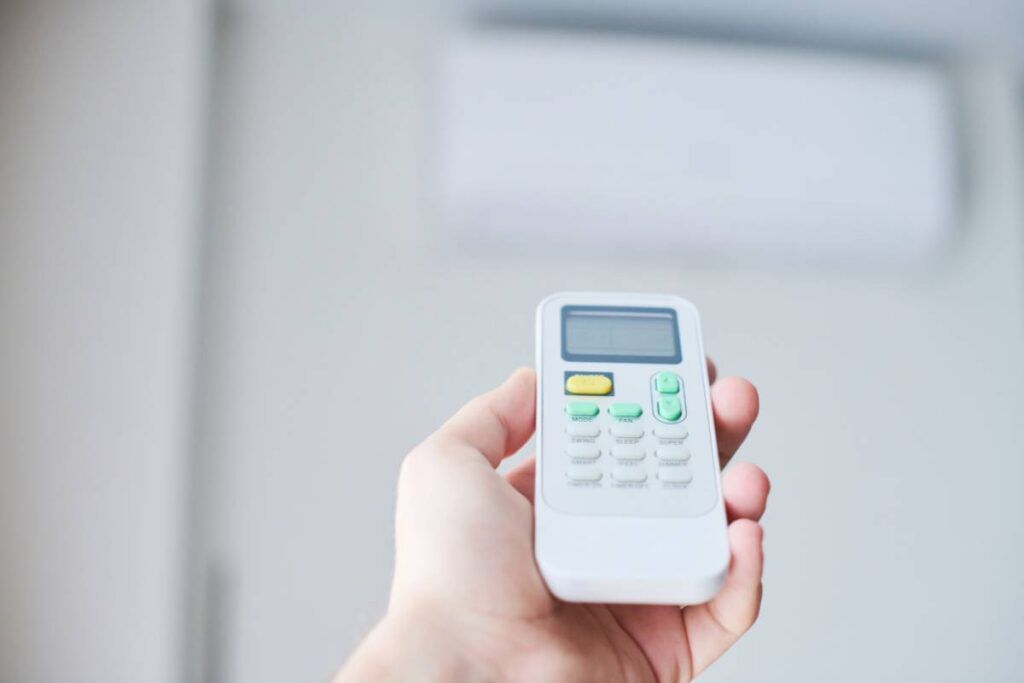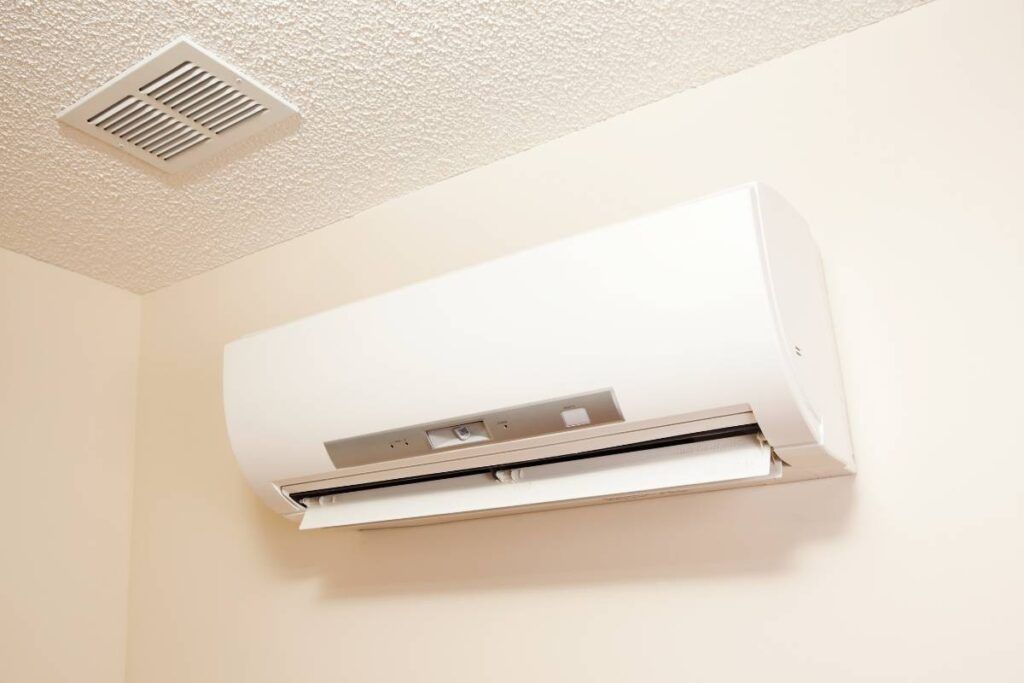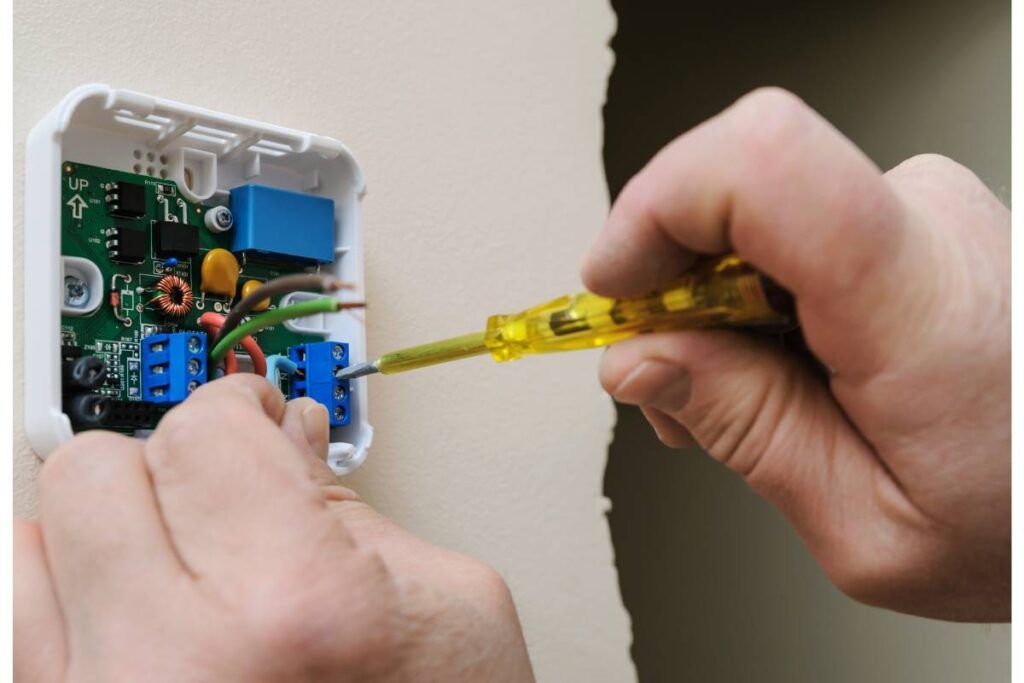A heat pump can provide you with both cooling and heating systems efficiently. But every gadget comes with a flaw. Heat pumps will short cycle, which reduces the unit’s ability to warm or cool your house and increases energy bills.
The primary reasons behind a heat pump’s short cycling are oversized units, thermostat issues, clogged air filters, and refrigerant leakage. Get the right unit size, correct the thermostat settings, change the filters, and call an HVAC to fix the refrigerant tubes.
Besides these major causes, there are more reasons responsible for short cycling. Today, we will discuss how to diagnose short cycling, explore the reasons behind it, and the ways of troubleshooting them.

Check out our list of top-handpicked products for all your electrical, appliance, and HVAC system needs to keep your home running smoothly.
This post includes some affiliate links.What is short cycling?
It is called short cycling when your heat pump turns on and shuts down after a few seconds or minutes before completing its heat cycle.
Your system will constantly run in its startup phase and not at optimal efficiency.
Is short cycling normal?
Short cycling in the heat pump is not at all normal.
Short cycling will put too much strain on the unit’s components and reduce the efficiency and lifespan of your unit faster.
Every time the unit jump starts, the energy bill increases too much.
So, whenever your unit is short cycling, you must find its real cause and solve it soon.
Though short cycling may seem harmless, it can cause significant damage to both the heating and cooling systems.
The short bursts of power will be tough for the system to handle and result in faster wear out.
How many times should a heat pump start the heating cycle?
There is no exact answer to this question because a heat pump starts depending on various factors like the outside temperature, the room temperature, and the heat pump type.
Generally, most heat pumps should turn the cycle on and off every 30 to 60 minutes, which means 1 to 2 cycles per hour.
Sometimes, the unit will run 2 to 3 cycles per hour, depending on the indoor and outdoor temperature.
A heat pump should constantly run for only 10 to 20 minutes, neither more nor less.
If the unit shuts off before the heating cycle is complete, it is short cycling.
Since it is not normal, you must figure out why.
Why does the heat pump have short cycles?

Heat pumps are a complex mechanism for inexperienced people.
Some house owners do not even know how to figure out the reason behind the quick on and off.
You may solve some problems yourself, but others require HVAC attention.
To know whether a problem requires an HVAC, you must inspect what is wrong with your unit.
So, here are some common reasons behind the short cycling of the heat pump:
1. Thermostat issues
A thermostat plays a great role in the heat pump’s functionality.
It signals your unit to turn on and off during the start and end of the heating cycles.
It also determines other things like the emergency heat, constant running of the fan, the desired temperature, humidity, etc.
A thermostat issue includes a lot of things:
Poor device placement
Poor placement of the thermostat will interfere with the accurate record of the room temperature, which can lead to the short cycling of the heat pump.
Suppose your thermostat is located in a place with direct sunlight.
The device will heat up quickly due to the sun’s heat and signal the unit to turn off before it completes the heating cycle.
The short cycling will occur every time you turn it on.
As a result, the unit’s efficiency will decrease, and your energy bills will increase.
Wire issues

The next thermostat issue is with the wires.
Frayed or damaged wires will also interrupt the signal and make your heat pump short cycle.
You must change the thermostat’s position and keep it in a central position in your house.
Consult an HVAC for the best position.
If the wires are the problem, you should hire a professional to fix them.
Temperature setting problem
When you set a temperature to an extreme level, the heat pump will constantly turn on and off.
The heat pump will try to give you the desired temperature while maintaining the room temperature.
As a result, the heat pump will frequently short cycle and overheat your unit.
When you set the temperature too low, the heat pump will have to work overtime to give you the desired temperature and maintain the room temperature.
Overworking will stress the unit too much, get overheated, and result in frequent short cycles.
The best option is to set a consistent and average temperature to keep your thermostat and heat pump in good shape.
The average temperature to set in the heat pump’s thermostat throughout the year would be around 65 to 70°F, 68°F being the best choice.
If you wish to change the level due to the outdoor temperature, increase or decrease it by only 5 degrees.
2. Wrong size of the unit

Based on the house’s square footage, the size of the heat pumps will differ.
An oversized heat pump heats your room faster and shuts down after a few minutes before the heating cycle ends.
Besides, a larger unit will need more power to heat your room and increase your energy bills.
With the right heat pump size, the heat cycles will end when they should, and your house will have comfortable warm air.
If you suspect your heat pump to be oversized, hire a local HVAC expert to help you with the size and recommend the right one.
You must know the square footage of your house to know the right heat pump size, as that is how it is determined.
A small guide to heat pump size:
- 500 square feet – 1 ton or 12,000 BTU heat pump
- 1,000 square feet – 2 tons or 24,000 BTU heat pump
- 1,500 square feet – 3 tons or 36,000 BTU heat pump
- 2,000 square feet – 4 tons or 48,000 BTU heat pump
3. Clogged air filters

The air filter filters the air absorbed by the unit and traps the air particles.
Over time, the filter will become clogged with dirt and debris.
If you do not change the filter from time to time, the heat pump will struggle to release the air and distribute it evenly around the house.
As a result, most of the air will remain trapped inside the unit and overheat.
When the unit overheats, the heat pump will shut off before it reaches the heating cycle.
You must change the filters every 3 to 4 months, based on the filter thickness, or whenever you see it dirty.
Try checking the filter every month.
Open the heat pump access cover and pull out the filter to check it.
If it is very dirty, replace it with a new one.
If the filter is reusable, wash it, dry it, and then put it back into the unit.
While installing the filter, ensure the arrow direction remains the same as before.
When you buy a filter, get the one that suits your heat pump’s size and model.
4. Refrigerant leakage

Refrigerant helps in cooling or heating the air around you.
The air absorbed by the heat pump passes through the coils, where the refrigerant removes the heat from the air and spreads it throughout the house.
It does the opposite thing with the air when you set the thermostat in HEATING mode with the help of the reversing valve.
If the refrigerant starts leaking from your unit, the heat pump won’t work properly, leading to frequent short cycles.
To confirm the problem, check for water puddles around your unit.
Sometimes, you cannot identify the problem because the liquid is colorless, odorless, and fades after some time.
Inhaling or touching the liquid is harmful. To understand the problem better, some manufacturers add a slight green tint.
You need an HVAC expert to replace the refrigerant tube.
5. Damaged compressor

The compressor helps circulate the air treated by the refrigerant throughout your house.
It helps the heat pump to transfer heat and maintain the system’s rhythm.
If the compressor is faulty or damaged, the unit will short cycle and turn off before reaching the heating cycle.
You should call an HVAC expert to fix the compressor.
Since compressors are quite expensive, think once before replacing them.
If your unit is too old, buying a new unit would be better than changing the compressor.
6. Faulty outdoor unit
The heat pump’s outdoor unit helps exchange the heat with the outside air.
If the outdoor unit is defective, the exchange will get interrupted.
As a result, your unit will shut down before completing the heating cycle.
You need to call a professional to examine the unit and fix the problem.
7. A problem with the control board

The control board is one of the main parts of the heat pump.
It manages the functionality of your system.
The control board controls the thermostat directly.
If the control board has damaged, it won’t be able to read the temperature correctly and cause the unit to short cycle repeatedly.
Due to this, the heat pump will short cycle and shut down before the completion of the heating cycle.
You have to replace the control board.
Since it is a matter of electricity, you should hire an expert to deal with it.
8. Poor insulation and leakage
Insufficient insulation and leakage can make your heat pump short cycle frequently.
The heat released through the heat pump will escape through the thin walls and leakages in the ducts, windows, and doors.
The heat pump runs to maintain the room temperature consistently.
But the warm air produced by the system will start escaping through these leakages.
As a result, your unit will constantly short cycle while trying to maintain the temperature of the room.
Take a walk along the ducts to find the leakage.
If you have insulated your house long ago, it is time to reinsulate it.
Call an HVAC to fix the leakages and reinsulate your house.
Use caulk sealing to seal the cracks and openings in the doors and windows.
If the window and door bases are empty, use weather stripping to seal those bases.

Final thoughts
If you are a beginner facing short heat pump cycles, this article may help you detect the right cause and troubleshoot it.
Most of the problems will need an expert for troubleshooting.
Still, you may fix some of them, for example, by correcting the thermostat settings and changing the dirty air filters.
Keep an eye on the heating cycle running times and how frequently they run.
The heating cycles should be 2 to 3 times per hour. Every time, it should run for 10 to 20 minutes.
If the cycle stops before 10 to 20 minutes and the number of cycles is too frequent, call an HVAC.
If you still need help figuring out the right cause, consider hiring a professional HVAC to look into the matter.
Is it normal for the heat pump to run constantly?
As I mentioned, a heat pump should run for 10 to 20 minutes for every cycle. If it runs more than that, there is some problem, and you should analyze and troubleshoot it.
Is it bad for the auxiliary heat to activate?
The auxiliary heat gets activated when the outside temperature drops too low, which is fine. The setting bypasses the primary heat source and keeps your house warm.
